Laptop Mag Verdict
The Dell XPS 14 is one of the longest lasting Ultrabooks yet and features Nvidia graphics, but the relatively heavy weight and high price give us pause.
Pros
- +
Long battery Life
- +
Accurate touchpad
- +
Attractive, soft-touch chassis
- +
Sharp display
Cons
- -
Heavy for an Ultrabook
- -
Limited viewing angles
- -
SSD option is very pricey
Why you can trust Laptop Mag
What good is an Ultrabook if you have to take the charger with you? Dell's approach with its new XPS 14z (starting at $1,099) is to pack a beefier battery than the competition does in exchange for a chunkier (albeit striking) design. Plus, our $1,499 configuration includes Nvidia graphics, making this Ultrabook a potentially solid MacBook Pro alternative. Is this 4.8-pound machine worth the weight?
Design
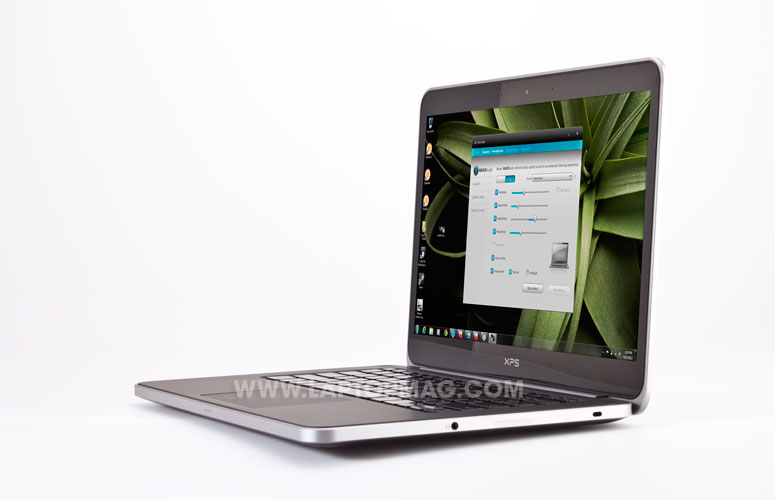
Click to EnlargeWhen closed, the Dell XPS 14 looks an awful lot like a MacBook pro with its brushed aluminum lid and sides. Like the MacBook Pro, the XPS 14 has a white power light on its front lip that flashes when the system is asleep and stays solid when its awake. The Apple comparisons stop the minute you open the lid and see the luxurious soft-touch black magnesium deck with its black island-style keyboard. We couldn't stop touching the spongy, silicone-based black underside.
Because of its high-capacity battery, the Dell XPS 14 weighs a bulky 4.8 pounds, which strained our wrist when we tried to pick it up with one hand. This notebook is dense. At 13.2 x 9.2 x 0.8 inches, the XPS 14 isn't the thinnest Ultrabook, either. HP's Envy 14 Spectre weighs just four pounds and is just 0.79 inches thick while the upcoming Lenovo ThinkPad X1 carbon will weigh around three pounds with a 14-inch screen. The 15-inch Samsung Series 9 weighs just 3.8 pounds while measuring only 0.58 inches thick.
Keyboard and Touchpad
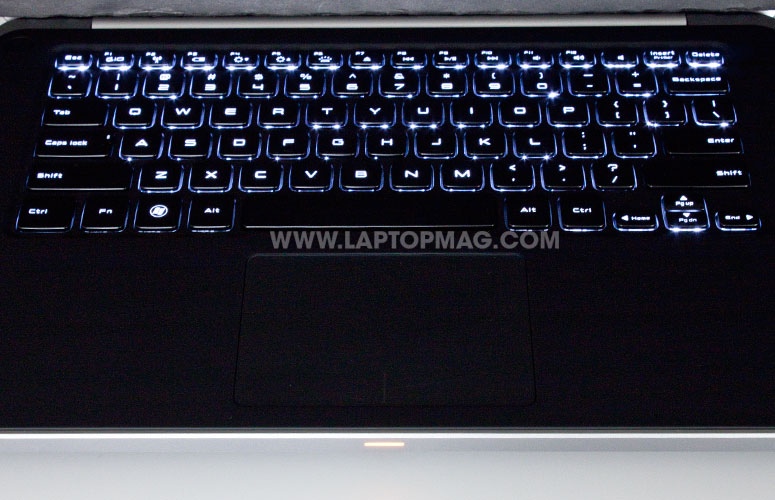
Click to EnlargeThe island-style, backlit keyboard on the XPS 14 has good key placement and a comfy soft-touch palmrest that kept our wrists from getting sore. However, the keys didn't have as much vertical travel as we like, leading us to occasionally miss a letter we thought we had hit. On the Ten Thumbs Typing test, where we average 80 to 85 words per minute and 1 percent error rate, we managed a solid 85 words per minute but with a 2 percent error rate because of the shallow keys.
The subtle back light operates at two brightness levels, a low level that we found just good enough to make out and a regular level that we'd recommend for most users.
Though its smooth black surface was a little slippery for our taste, the 3.9 x 2.8-inch buttonless Synaptics touchpad provided accurate navigation around the desktop without any of the jumpiness we've experienced on many clickpads.
We were impressed with the pad's strong gesture support. While we often have to attempt a multifinger gesture a few times to have it register once, the XPS 14's touchpad almost always picked up pinch zooms, rotates, three-finger swipes (to go back and forward between pictures), four fingers up to switch tasks, four fingers down to minimize all apps and even three finger hold to launch the browser.
Heat
The Dell XPS 14 stayed relatively cool throughout our testing. After streaming a full screen video for 15 minutes, we measured the keyboard at a reasonable 90 degrees and the touchpad at an icy 80 degrees Fahrenheit. However, the underside got a little warm at 98 degrees. We consider temperatures below 95 comfortable, those between 95 and 100 as potentially uncomfortable and those above 100 disturbingly hot.
Display
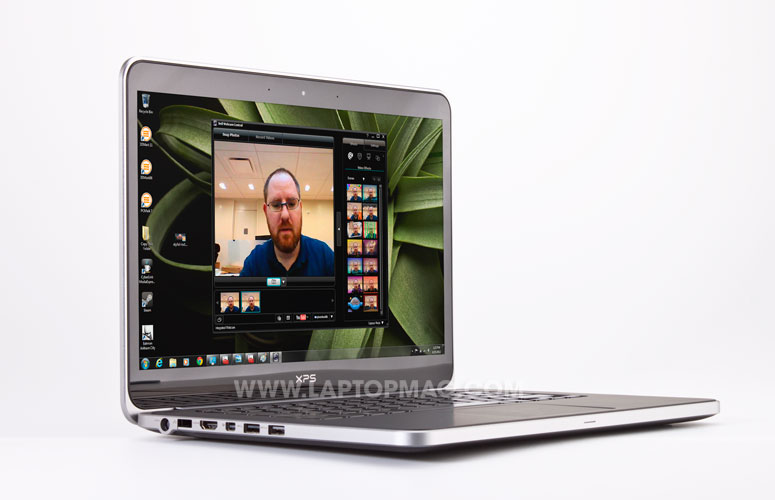
Click to EnlargeThe Dell XPS 14's 14-inch WLED backlit, 1600 x 900 screen offers images that are really sharp and bright when viewed head-on but appear washed out when viewed from any other angle. At 435 lux on our light meter, the screen was one of the brightest we've tested on a notebook, clearly outshining the thin-and-light notebook average of 186 lux, the 13-inch MacBook Air (268 lux) and the HP Envy 14 Spectre (249 lux). The ASUS ZenBook Prime UX31a had a similar 423 lux.
Productivity-oriented users will really appreciate the additional screen real estate that the XPS 14 offers over the flood of notebooks with 1366 x 768 displays, because those extra pixels let you see more text in your documents, e-mails and Web pages without scrolling. Unfortunately, the glossy panel, made out of scratch-resistant Gorilla glass, didn't provide the best color accuracy.
When we played a 1080p MP4 trailer for "Sky Fall," details like the stubble on Daniel Craig's beard or the wrinkles in another man's forehead were particularly sharp, but colors -- especially blacks -- appeared washed out. When we moved to even 45 degrees off center, the dark parts of the image completely inverted, making the movie unviewable. By comparison, the same video on the MacBook Air 13-inch was bright, vibrant and viewable from much wider angles.
Audio
The sound from the XPS 14's bottom-mounted speakers did not offer sound that was nearly as rich as from last year's Dell XPS 15. However, music playback was excellent, particularly with the Waves Maxx audio software configured to music mode. When we played the bass-heavy tunes "Forget Me Nots" and "Summer Madness," sound was accurate and we could even make out a solid separation of sound between the two speakers.
However, when we played hard rock tunes like "Breaking the Law," "Symphony of Destruction" and "Smoke on the Water," the guitar seemed a little distorted, particularly at higher volumes. The maximum volume was loud enough to fill a huge room.
The bundled Waves Maxx audio software provides both manual bass / treble sliders and presets for different types of sound, including movies, music and MaxxSense which decides for you. We found that most songs sounded better at MaxxSense settings, which uses the MaxxLeveler volume leveler to give you the best combination of high volume and fidelity. With Waves Maxx disabled, music sounded flat and lifeless.
Ports and Webcam
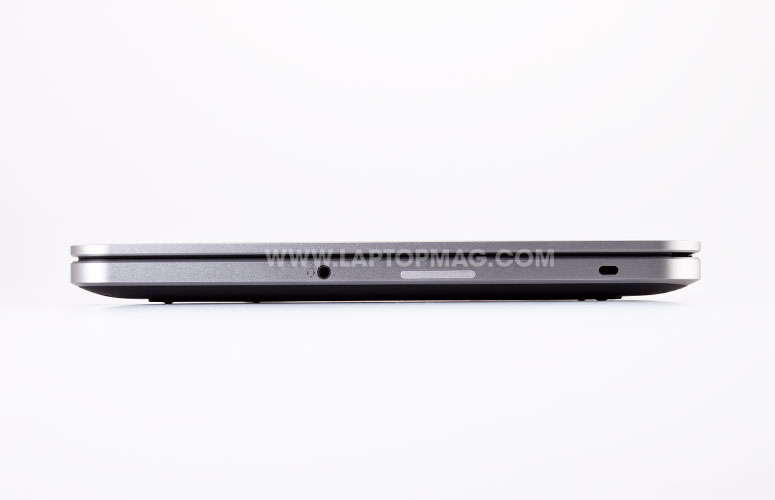
Click to EnlargeDespite its girth, the XPS 14 lacks an optical drive and packs a modest selection of ports. On the right side sit a headphone jack, a 3-in-1 SD card reader and a Kensington lock slot. On the left side you'll find two USB 3.0 ports, a fold-out Ethernet jack, and both mini DisplayPort and HDMI out connections. Considering all the empty space on the right side, we'd like to have seen at least one more USB port and a VGA connection for attaching the system to the many monitors and projectors that have neither DisplayPort nor HDMI.
The 1.3-MP webcam captured sharp and colorful photos under good lighting and still managed to deliver strong images in low light. When we shot a picture with a window in front of us, our facial features were sharp and skin tones accurate. When we sat in a shadowy area of our office, the webcam brightened up the image so it looked as if we were in direct light. As a result, though, the image suffered from some noisiness and blockiness. Still, we were impressed because most webcams would have delivered an image under the same conditions that was both noisy and dark.
As with most webcams, the XPS 14's lens completely washed out our features when there was a bright light source behind us. The bundled Dell Webcam Central software allows users to add goofy overlays such as a set of cartoon stars or green prison bars on top of the image. It also has an avatar section that lets you substitute a picture of a silly character like a cartoon cat for your face.
Performance
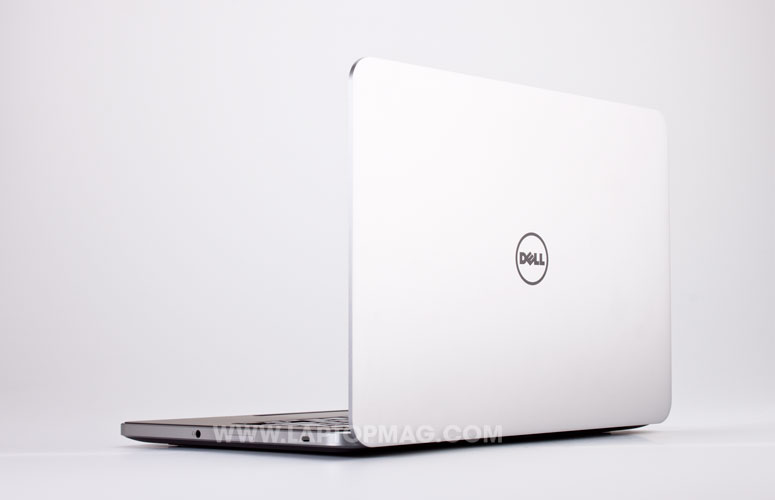
Click to EnlargeWith its 1.9-GHz Intel Core i7-3517U CPU, 8GB of RAM, discrete Nvidia GT 630M graphics chip and 500GB 5,400 rpm hard drive with 32GB Flash cache, the XPS 14 turned in solid performance numbers that are excellent for productivity, media consumption and casual gaming. They won't let you play really demanding games.
On PCMark07, a synthetic benchmark that measures overall system performance, the XPS 14 scored a solid 3,323, well above the thin-and-light notebook category average of 2242, but not as fast as the 4,989 turned in by the ASUS ZenBook Prime UX31a, which has the same CPU but uses a 256GB SSD. The Samsung Series 9 15-inch achieved a score of 3,636 with a slower 1.6-GHz Core i5-2467M CPU and an SSD.
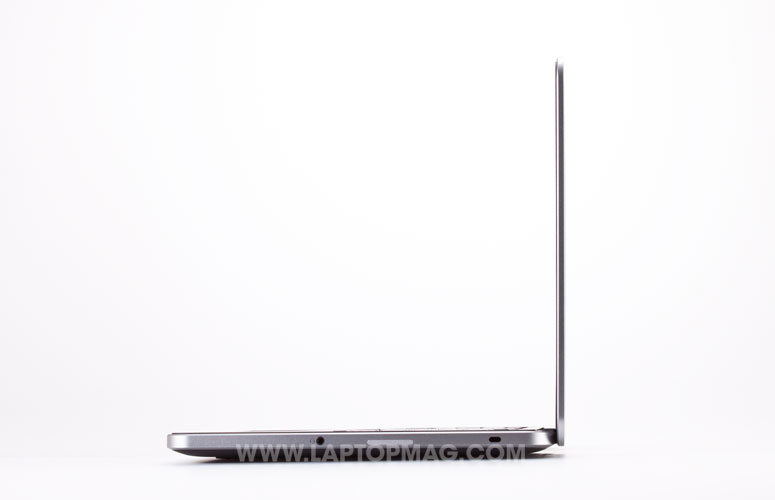
Click to EnlargeThe 500GB 5,400-rpm hard drive plus 32GB cache booted Windows 7 Home Premium (64-bit) in a modest 46 seconds, faster than the 59-second category average but way slower than competitors with SSDs like the Samsung Series 9 15-inch (16 seconds), ASUS ZenBook Prime UX31A (23 seconds) and the HP Envy 14 Spectre (35 seconds).
The lack of an SSD affected the XPS 14's ability to complete file copies as quickly as its competition. The 5,400 rpm hard drive took 2 minutes and 43 seconds to complete the LAPTOP File Transfer test, which involves copying 4.97GB of mixed media files. That's a rate of 31.2 MBps, slightly faster than the 29.6 MBps category average but one fifth the speed of the 154.2 MBps turned in by the Samsung Series 9 15-inch, less than half as fast as the HP Envy 14 Spectre's rate of 74.8 MBps and not close to the ASUS ZenBook Prime UX31a's rate of 51.4 MBps.
Due to its speedy 1.9-GHz Generation Core i7-3517U CPU, the Dell XPS 14 was able to handle compute-intensive tasks better than disk-centered ones. The notebook took just 22 seconds to transcode an HD video with Cyberlink Media Espresso, far better than the 1 -minute and 18 -seconds category average.
The XPS 14 also took a solid 5 minutes and 26 seconds to complete the LAPTOP Spreadsheet Macro test, which matches 20,000 names with addresses. That's comfortably ahead of the 6:05 category average and the 7:04 time offered by the Samsung Series 9 15-inch.
Graphics
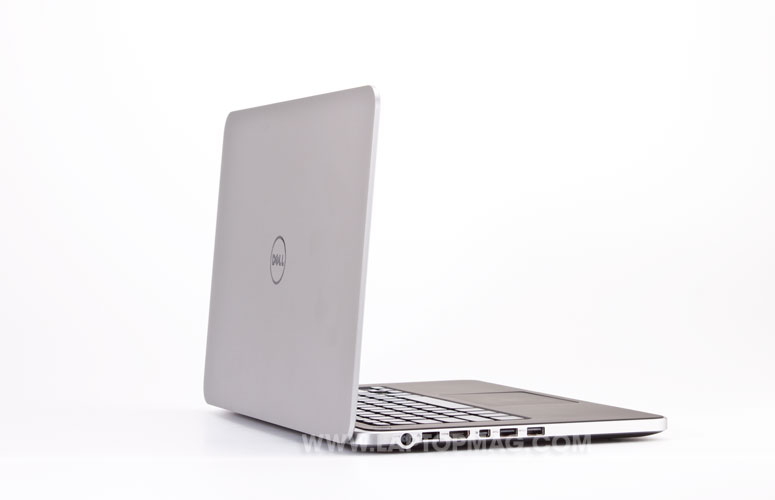
Click to EnlargeThe optional Nvidia GT 630M graphics on our review configuration provide enough oomph to let you play mid-level games but not to turn this multimedia maestro into a gaming system. On 3DMark06, a graphics benchmark that measures overall graphics prowess, our Dell XPS 14 scored a solid 6,886, higher than the 5,060 category average and the 3,438 offered by the Envy 14 Spectre.
When we tried playing "World of Warcraft" at auto detect settings, the Dell XPS 14 managed a strong 76 frames per second, which dropped to a still-playable 34 fps with special effects turned up. Those numbers beat the tar out of the 51 / 29.1 fps category averages for thin-and-light notebooks.
However, when we tried to play Batman: Arkham City at the XPS 14's 1600 x 900 resolution, we could get only a slideshow-like 18 fps with the special effects set at low. Only after we dropped the screen resolution down to 1366 x 768 were we able to get a somewhat -playable 26 fps rate.
Battery Life
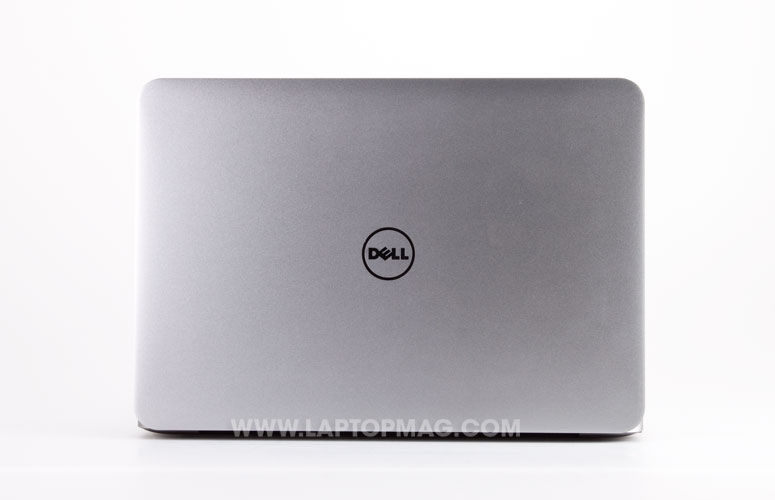
Click to EnlargeWith its built-in 69 watt hour battery, the XPS 14 lasted a whopping 8 hours and 14 minutes on the LAPTOP Battery Test, which involves continuous surfing over Wi-Fi. That time is hours longer than the thin-and-light notebook category average of 6 hours and 18 minutes and the HP Envy 14 Spectre's time of 6 hours and 24 minutes, the ASUS ZenBook Prime's 6 hours and 28 minutes, and the Samsung Series 9 15-inch's 6 hours and 59 minutes. The MacBook Air 13-inch turned in a nearly identical time of 8 hours and 10 minutes, but weighs 1.8 pounds less.
Configurations
The Dell XPS 14 starts at $1,099. For that price, you get the notebook with a low-voltage 1.7-GHz Core i5-3317U CPU, 4GB of RAM, integrated Intel HD 4000 graphics and a 500GB 5,400-rpm hard drive plus 32GB mSATA flash cache. Our $1,499 review configuration comes with a 1.9-GHz Core i7-3517U CPU, Nvidia GT 630M graphics, 8GB of RAM and the same 500GB hard drive plus 32GB cache. A $1,999 model comes with a 512GB SSD instead of the hard drive plus cache, but there's no way to get a smaller, less expensive SSD.
You can get a variety of different configs in prices up to $1,999, a couple of which include integrated mobile broadband cards that operate over Dell's prepaid NetReady 3G service. NetReady starts at $.99 cents for 15 minutes of use and goes up to $69.96 for 5GB of use over the course of a month.
Software and Warranty
Dell preloads the XPS with a minimum of utilities and a small smattering of trialware. Dell Support Center provides you with some information about your hardware, the ability to perform a PC Check hardware scan, a visual readout of your available hard drive space and the ability to download new driers. Its Backup & Recovery feature allows you to either create a system recovery disk or use 2GB of free cloud storage from Dell's DataSafe service.
As mentioned above, Dell Audio lets you exert fine control over the Waves Maxx sound output while Dell Webcam Central lets you control the webcam and shoot pictures.
The XPS 14 also comes with Office 2010 Starter, a trial version of McaFee Security Suite, Windows Live Essentials and Skype. Except for Office 2010 Starter, all of these applications could be downloaded by anyone using the Internet.
Dell backs the XPS 14 with a standard one year warranty on parts and labor, and offers extended warranties and IT-friendly services including ProSupport, Accidental Damage Service and configuration services that help organizations deploy the notebooks to many users with the same custom image.
Verdict
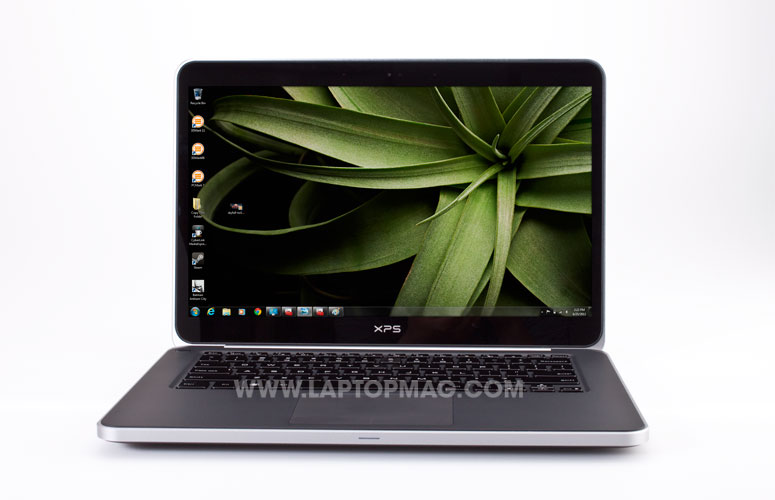
Click to EnlargeAt first blush, the Dell XPS 14 has all the features you'd want from a 14-inch Ultrabook with an emphasis on media and productivity. Students who move from class to class all day and business people who go disconnected for long periods will appreciate the eight-plus hours of battery life as well as the comfortable palm rest and accurate touchpad. However, the notebook's 4.8-pound chassis feels quite heavy in comparison to competitors, and the 5,400-rpm hard drive really slows the notebook down. (Anything above $1,000 should really have an SSD standard.)
For the same $1,499 as our review unit costs, you can get the three-pound ASUS ZenBook Prime UX31A, which doesn't have discrete graphics or last as long on a charge, but sports a full HD screen and a zippier 256GB SSD. Mac fans could get the $1,199 MacBook Air, which offers just as much endurance and a superior screen. Overall, the XPS 14 is a well designed Ultrabook with plenty of punch and endurance, but it's not the best value.
Dell XPS 14 (2012) Specs
| Bluetooth | Bluetooth 4.0 |
| Brand | Dell |
| CPU | 1.9-GHz Intel Core i7-3517U |
| Card Slots | 3-1 card reader |
| Company Website | www.dell.com |
| Display Size | 14 |
| Graphics Card | Nvidia GT 630M |
| Hard Drive Size | 500GB + 32GB mSATA SSD |
| Hard Drive Speed | 5,400rpm |
| Hard Drive Type | SATA Hard Drive + mSATA SSD |
| Native Resolution | 1600x900 |
| Operating System | Windows 7 Home Premium (64-bit) |
| Ports (excluding USB) | Kensington Lock, Headphone/Mic, HDMI, Ethernet, USB 3.0, Mini DisplayPort |
| RAM | 8GB |
| RAM Upgradable to | 8GB |
| Size | 13.2 x 9.2 x .81 inches |
| Touchpad Size | 3.9 x 2.8 |
| USB Ports | 2 |
| Video Memory | 1GB |
| Warranty/Support | One year standard parts and labor |
| Weight | 4.8 pounds |
| Wi-Fi | 802.11 a/g/n |
| Wi-Fi Model | Intel Centrino Advanced-N 6235 802.11 a/g/n |

